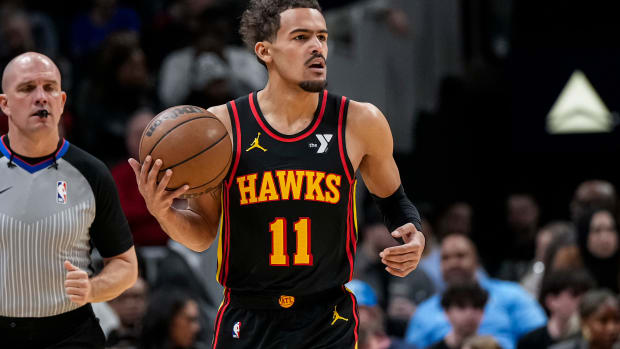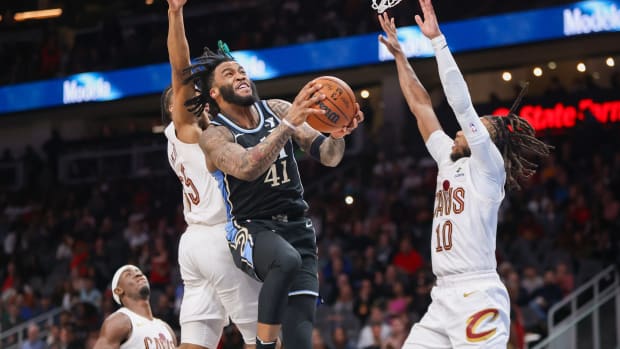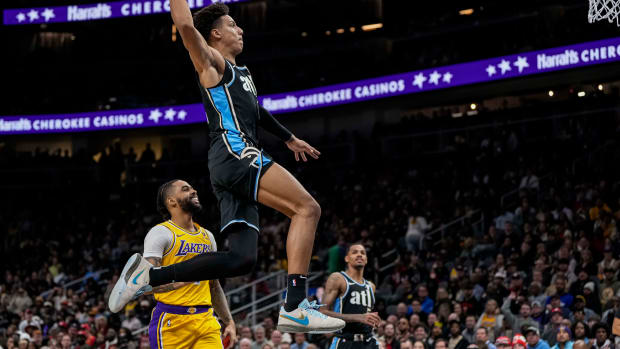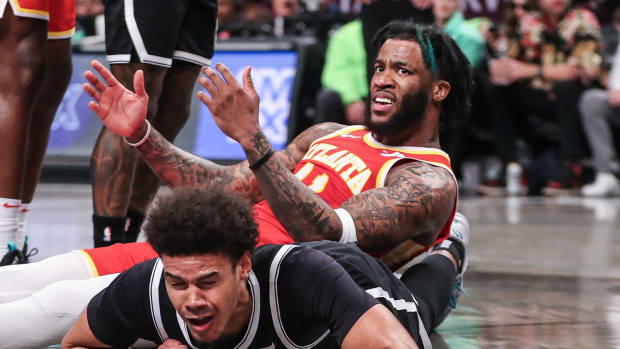Game Preview: San Antonio Spurs
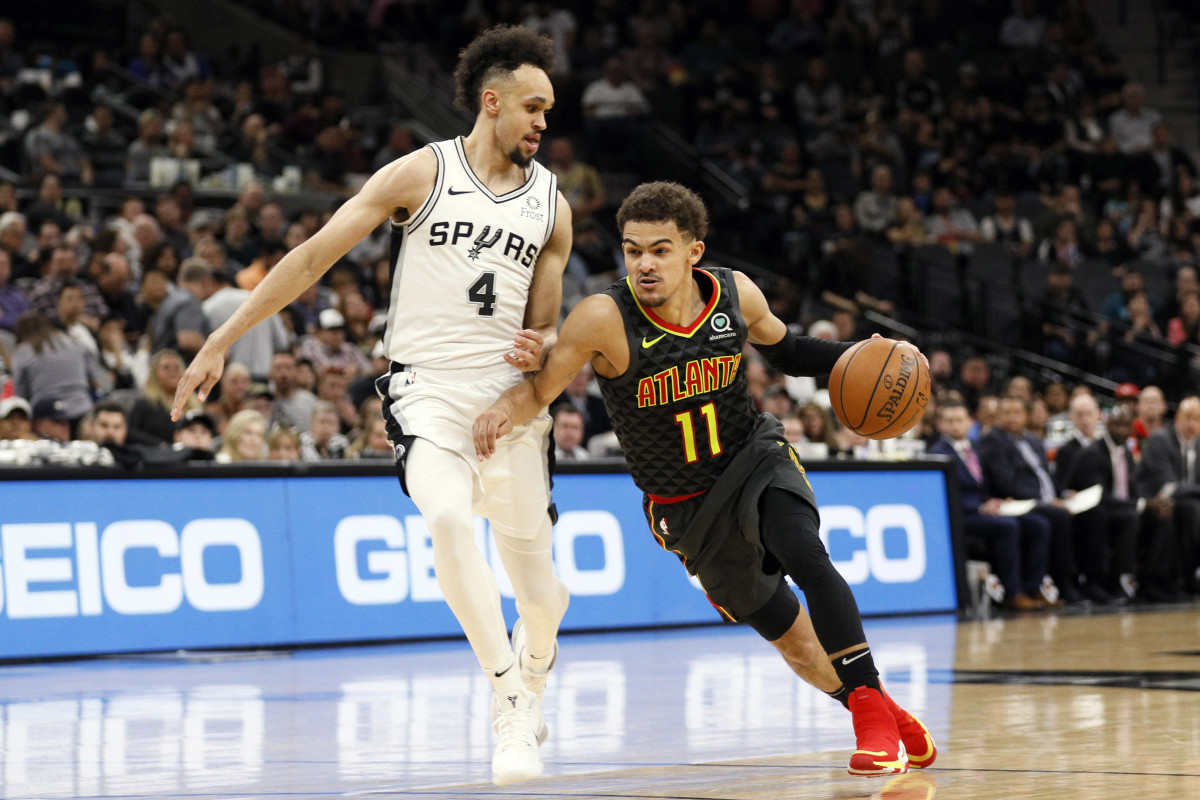
After four days of rest and preparation, the Hawks will take on the San Antonio Spurs for the first time this season Tuesday evening at State Farm Arena. Atlanta enters the night with a 2-3 record after losing their last three games, while the Spurs have lost two of their last three (to the Clippers and Lakers) after a 3-0 start. The Hawks dropped both contests to the Spurs last season.
Defeating San Antonio isn’t a matter of talent, but execution. Even in the days of Tim Duncan, Manu Ginobili, and Tony Parker, the Spurs made a living by simply being more precise than their opponents. They were a testament to the difference between meticulously-run sets and sloppy offense, punctual defensive rotations and late ones, veteran smarts and youthful error. Plug Hall-of-Fame talents into the system, and those edges add up to unprecedented dominance. San Antonio now lacks the talent it once had, but its systemic advantages still net positive results, and teams like Atlanta – young, fast, and often overzealous – are exactly the sort of opponent it has preyed on for decades.
That will make for a fascinating test for the Hawks, who have been prone to excessive turnovers and sheepish defense in the last two seasons as they attempt to build the habits and attention to detail the Spurs have so elegantly mastered. San Antonio seldom wears down, and wins largely by applying constant pressure throughout a game until its opponent simply can’t match it anymore. A strong first quarter may seem encouraging until a team slows down in the fourth while the Spurs operate at the exact same pace. The phenomenon also holds true when extrapolated over a full season; this is not a team that will beat itself.
Game Time: Tuesday, November 5, 2019 at 7:30 p.m. ET
Location: State Farm Arena in Atlanta, GA
TV: FOX Sports Southeast, FOX Sports Southwest
Streaming: NBA League Pass, FOX Sports Go
That discipline might be San Antonio’s most valuable trait given how unconventionally it plays. As the rest of the league rushes to shoot as many 3s and layups as possible, the Spurs are an aberration to that trend. They’re currently leading the league in percentage of shots taken from the midrange for the second consecutive season, and rank 29 in the NBA in 3-point frequency and percentage of shots at the rim. Any normal team with that type of shot distribution should challenge for the worst offense in the league. But San Antonio defies that logic – in classic Spurs fashion – by executing better than anyone else. It ranks 11 in offensive efficiency thanks to accurate shooting and a low turnover rate (their 15.1 percent turnover rate is astronomical by Spurs standards); by simply generating a decent look on nearly every possession the Spurs ensure a high median outcome for any given trip down the court, and they force opponents to guard for the duration of possessions.
“We practice against space and movement and pace every single day,” Lloyd Pierce said. “It’s communicating at that pace. When you’re flying around and a DHO happens on one side, and they reverse it and a pick-and-roll happens over there it happens really quick. To communicate it as it’s happening is late. To be able to communicate before it’s happening is where we’re trying to grow to.”
They have also constructed a system to complement the skills of their best players. It would be nice if LaMarcus Aldridge and DeMar DeRozan would step out and shoot 3s more often, but because they don’t, San Antonio’s offense is designed to make their attempts as comfortable as possible, with deadly shooters flanking them to keep the floor spaced. Those two have struggled individually this season and are not the kinds of centerpieces that can singlehandedly lift an offense above the league average. But they are good enough to create their own offense at passable rates, which affords breathing room to their teammates, who score with remarkable efficiency on unremarkable usage. Dejounte Murray and Derrick White offer zippy dribble penetration and facilitating as a counter to Aldridge and DeRozan’s methodical, plodding work in the midrange, while Patty Mills and Bryn Forbes are both shooting over 35 percent on 3-pointers. Rudy Gay, Marco Belinelli, and Trey Lyles will all hit at higher rates than they have so far.
Aldridge in particular is off to a tough start to the season, scoring just 16 points per game on well below league-average efficiency. He’s posting his lowest usage rate since 2010 and turning the ball over on an unsustainably high 13 percent of his possessions. He’ll get back on track eventually, and Tuesday night could be the inflection point. The Hawks simply lack the sort of defender that can really bother Aldridge’s diligent post game. Bruno Fernando might be Atlanta’s best option given his size and strength, but Aldridge’s crafty moves vex even the most seasoned defenders; what chance would a rookie stand against him? On the wing, DeRozan will offer a nice challenge for De’Andre Hunter and DeAndre’ Bembry, but the more difficult and important task will be keeping track of San Antonio’s shooters as they fly around screens and behind inattentive defenders. Doing so will require the Hawks’ most focused and consistent defensive effort of the season.
If Trae Young returns (all signs seem to indicate that he will), he’ll encounter a rude welcome back to the court in Murray and White, two of the peskiest defenders at the point of attack in the league. With Murray on a 23-minute-per-game limit as he returns from a torn ACL last season, Gregg Popovich has opted to stagger his two point guards, who have yet to play a single minute together this season. That gives opposing ball-handlers no time to rest. Murray starts, White keeps the pressure on while he sits. Few players traverse ball screens better than White while Murray might be the best and most disruptive all-around defensive guard in the NBA. “This is where our concepts will be tested,” Pierce said. “It’s read and react. He’s going to try and deny and take away a lot of our reversals. … It’s whether or not we can read that.”
“He’s a really good defender,” Young said of Murray.” He’s just a good player, very smart player. So it’s going to be a tough challenge.”
As a team, San Antonio has defended at an average level – a vast improvement over last year’s 20-ranked defensive unit. They don’t force turnovers, but the Spurs seldom foul and are perennially one of the best defensive rebounding teams in the NBA. Popovich has played small lineups more often, which typically translates to a defensive dropoff, but the Spurs have been good enough with Jakob Poeltl on the floor – usually in second units – that they can get away with putting weaker personnel around him. Aldridge has never been a great defensive anchor, and, at age 34, may not have that capability within him. That could bode well for the Hawks, who generate the fourth-highest share of shots at the rim in the league and make them at a relatively high rate.
“The more you move, the more reversals we have, eventually defensive teams and their coverages collapse when they start to switch,” Pierce said. “It’s hard to guard anybody if they move from one side to the next side and back to the next side. … If we can move it, we’ll be alright.”
That advantage may only come to pass if Young’s ankle is right, and even then the Hawks will have a difficult time managing the Spurs’ discipline and consistency. For a young team trying to climb the NBA ladder a season at a time, Tuesday night will stand as an opportunity for Atlanta to measure itself against a team that has been at the top – and appreciate what it takes to stay there.



